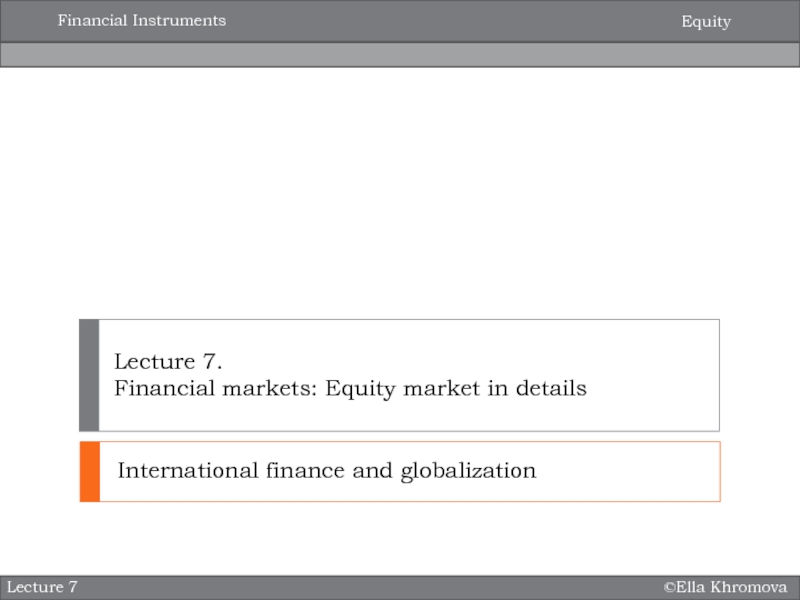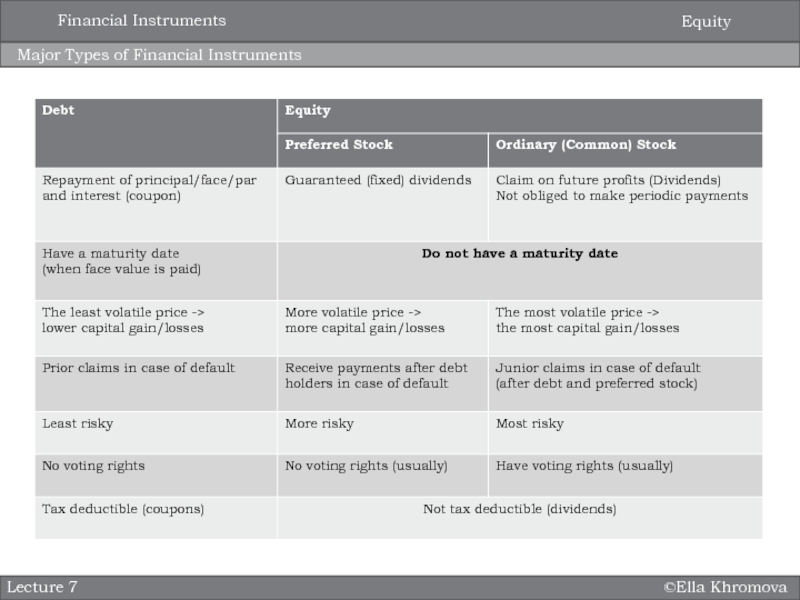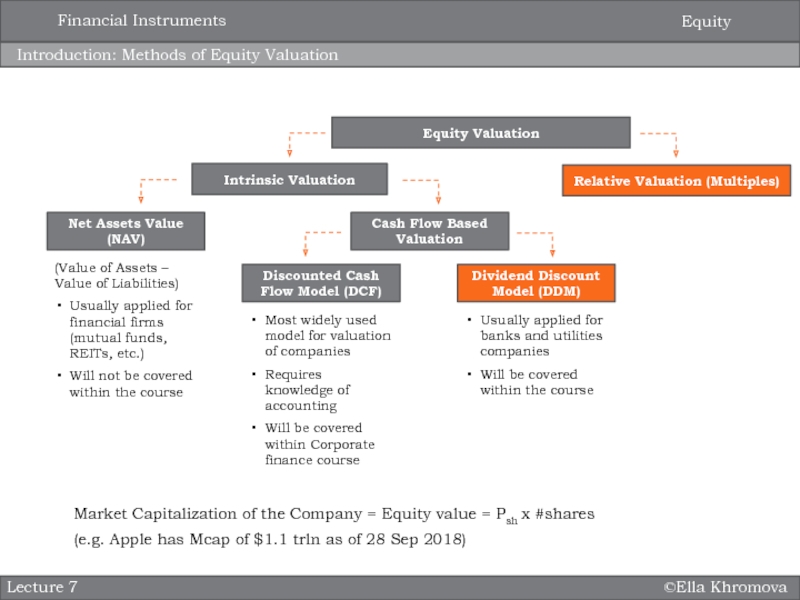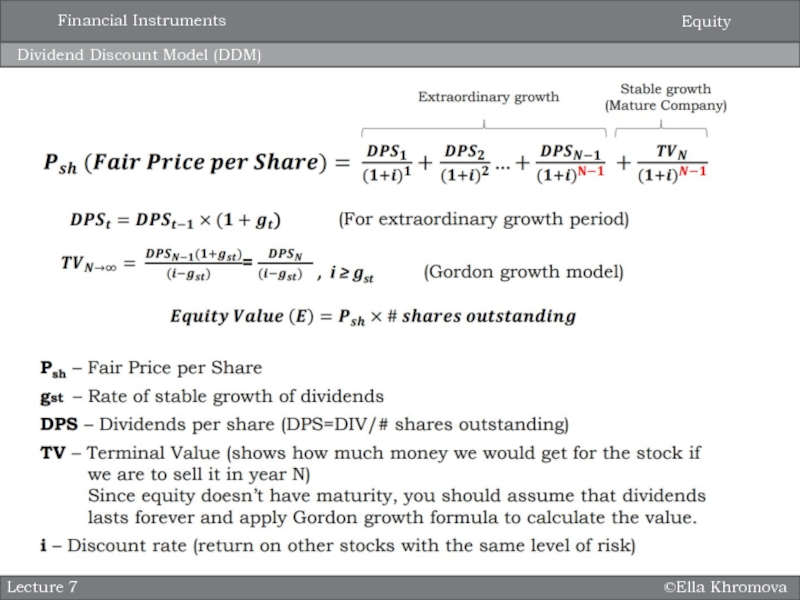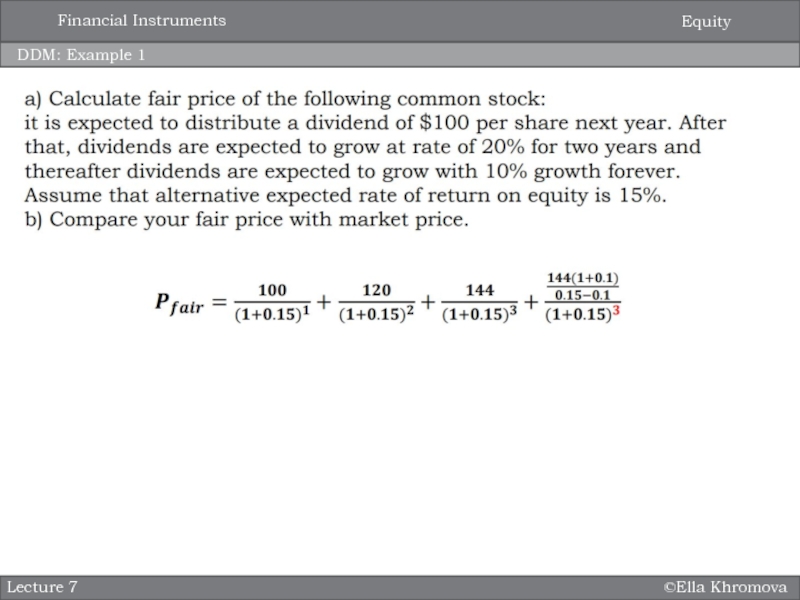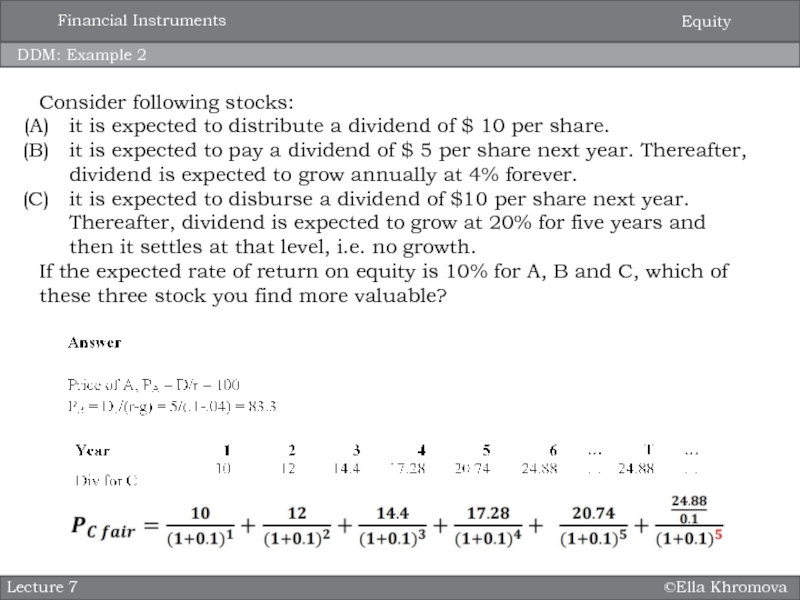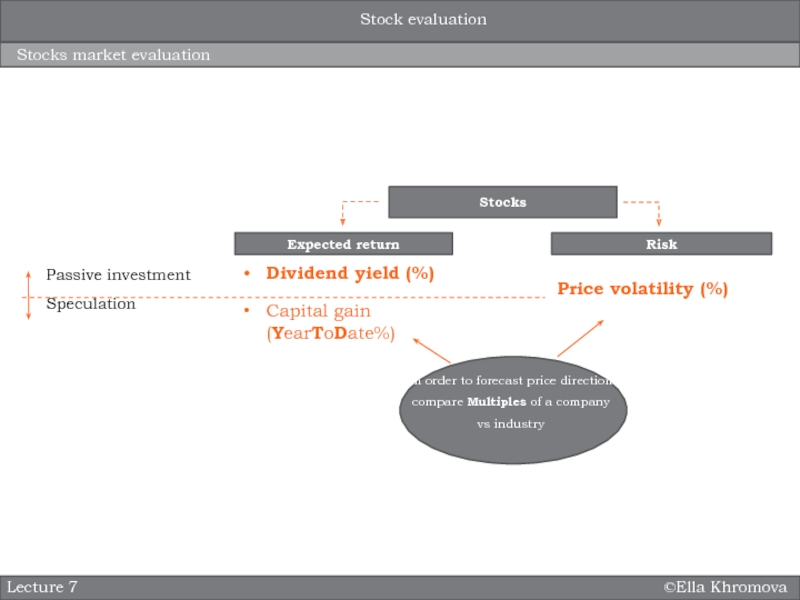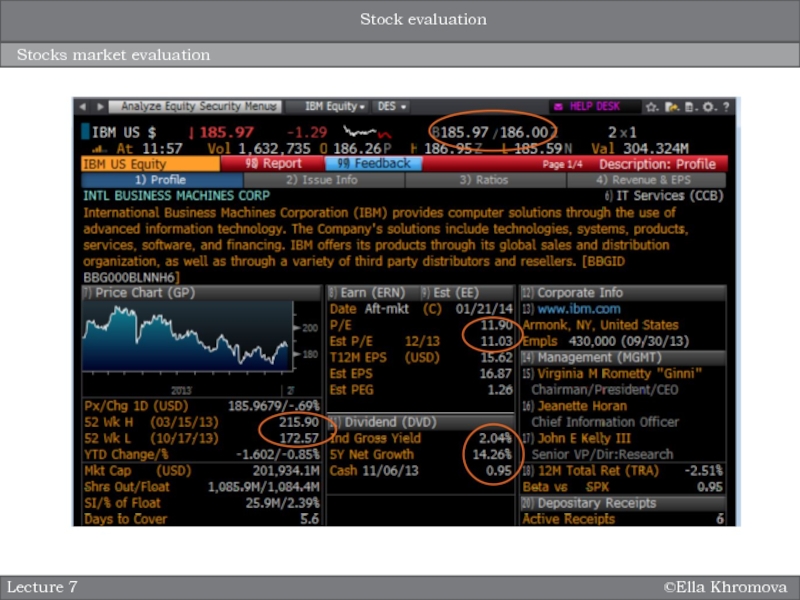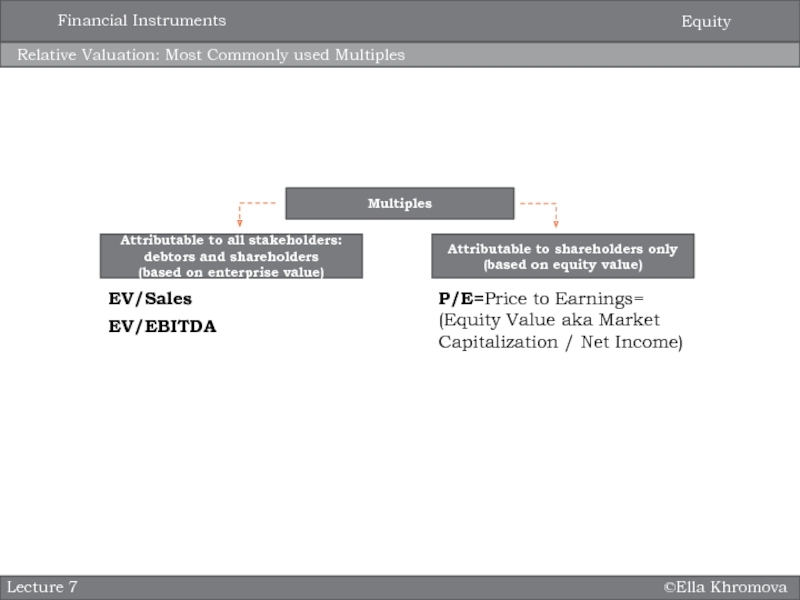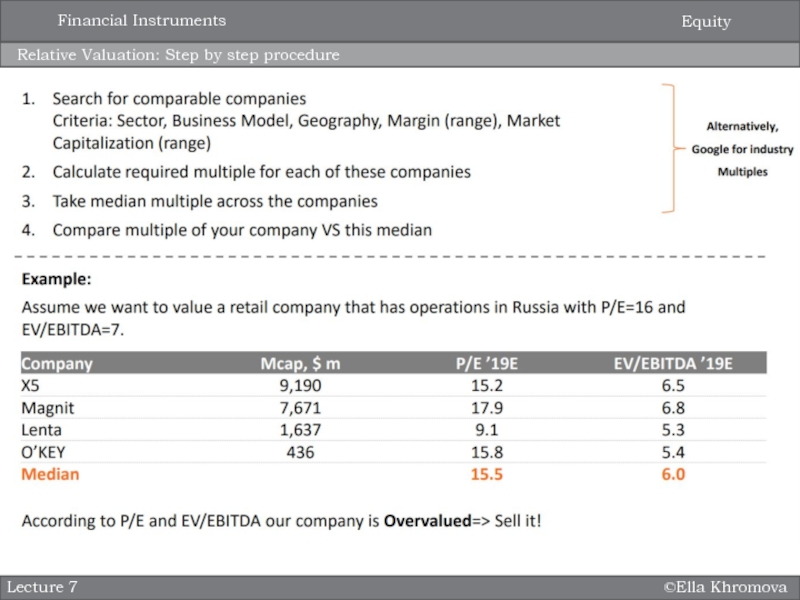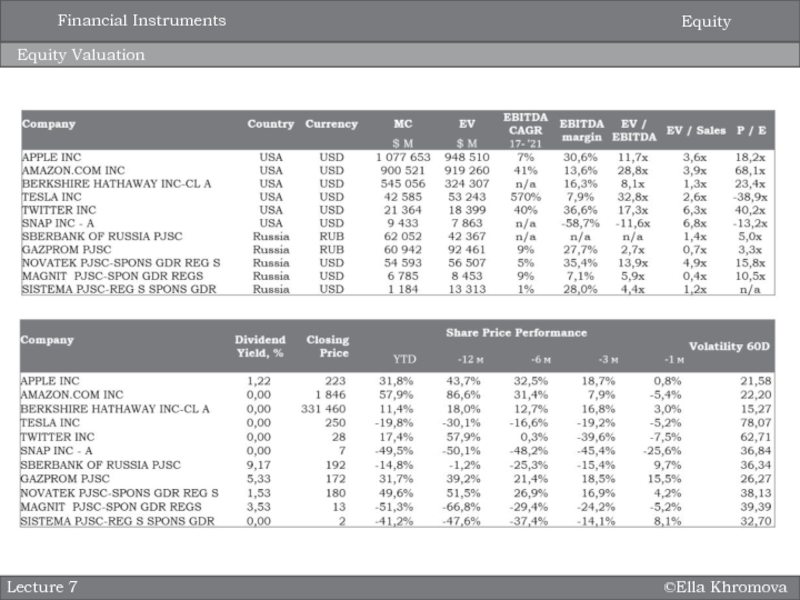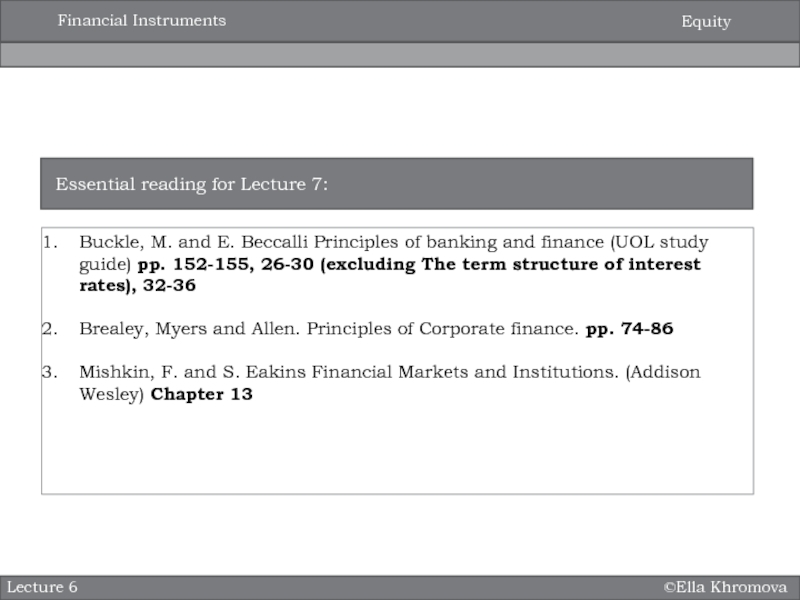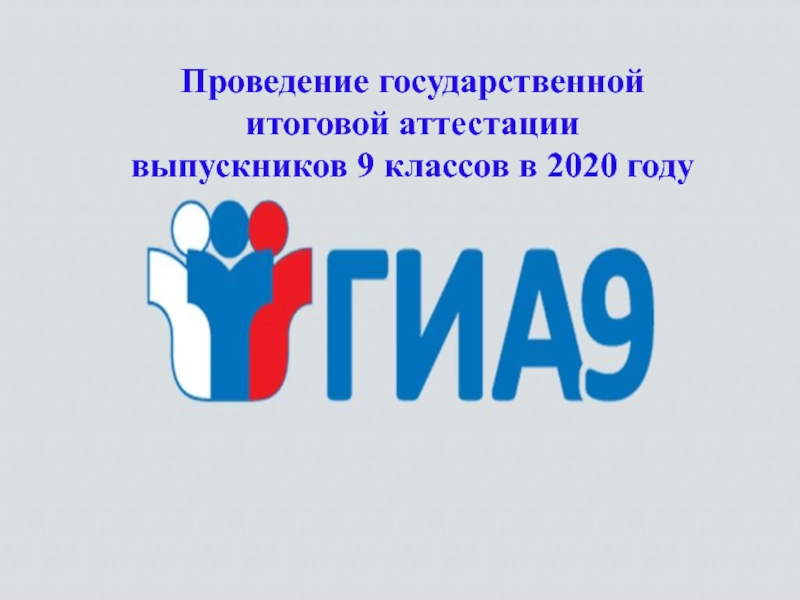Разделы презентаций
- Разное
- Английский язык
- Астрономия
- Алгебра
- Биология
- География
- Геометрия
- Детские презентации
- Информатика
- История
- Литература
- Математика
- Медицина
- Менеджмент
- Музыка
- МХК
- Немецкий язык
- ОБЖ
- Обществознание
- Окружающий мир
- Педагогика
- Русский язык
- Технология
- Физика
- Философия
- Химия
- Шаблоны, картинки для презентаций
- Экология
- Экономика
- Юриспруденция
Lecture 7. Financial markets: Equity market in details
Содержание
- 1. Lecture 7. Financial markets: Equity market in details
- 2. ©Ella KhromovaMajor Types of Financial InstrumentsLecture 7EquityFinancial Instruments
- 3. ©Ella KhromovaIntroduction: Methods of Equity ValuationLecture 7Intrinsic
- 4. ©Ella KhromovaDividend Discount Model (DDM)Lecture 7EquityFinancial Instruments
- 5. ©Ella KhromovaDDM: Example 1Lecture 7EquityFinancial Instruments
- 6. ©Ella KhromovaDDM: Example 2Lecture 7Consider following stocks:
- 7. ©Ella KhromovaStocks market evaluationLecture 7StocksExpected returnRiskDividend yield
- 8. ©Ella KhromovaStocks market evaluationLecture 7Stock evaluation
- 9. ©Ella KhromovaRelative Valuation: Most Commonly used MultiplesLecture
- 10. ©Ella KhromovaRelative Valuation: Step by step procedureLecture 7EquityFinancial Instruments
- 11. ©Ella KhromovaEquity ValuationLecture 7EquityFinancial Instruments
- 12. ©Ella KhromovaBuckle, M. and E. Beccalli Principles
- 13. Скачать презентанцию
Слайды и текст этой презентации
Слайд 1Lecture 7.
Financial markets: Equity market in details
©Ella Khromova
Lecture 7
International
finance and globalization
Слайд 3©Ella Khromova
Introduction: Methods of Equity Valuation
Lecture 7
Intrinsic Valuation
Relative Valuation (Multiples)
Net
Assets Value (NAV)
(Value of Assets – Value of Liabilities)
Usually applied
for financial firms (mutual funds, REITs, etc.)Will not be covered within the course
Cash Flow Based Valuation
Dividend Discount Model (DDM)
Discounted Cash Flow Model (DCF)
Usually applied for banks and utilities companies
Will be covered within the course
Most widely used model for valuation of companies
Requires knowledge of accounting
Will be covered within Corporate finance course
Equity
Financial Instruments
Market Capitalization of the Company = Equity value = Psh x #shares
(e.g. Apple has Mcap of $1.1 trln as of 28 Sep 2018)
Слайд 6©Ella Khromova
DDM: Example 2
Lecture 7
Consider following stocks:
it is expected
to distribute a dividend of $ 10 per share.
it
is expected to pay a dividend of $ 5 per share next year. Thereafter, dividend is expected to grow annually at 4% forever. it is expected to disburse a dividend of $10 per share next year. Thereafter, dividend is expected to grow at 20% for five years and then it settles at that level, i.e. no growth.
If the expected rate of return on equity is 10% for A, B and C, which of these three stock you find more valuable?
Equity
Financial Instruments
Слайд 7©Ella Khromova
Stocks market evaluation
Lecture 7
Stocks
Expected return
Risk
Dividend yield (%)
Capital gain (YearToDate%)
Price
volatility (%)
Passive investment
Speculation
In order to forecast price direction compare Multiples
of a company vs industryStock evaluation
Слайд 9©Ella Khromova
Relative Valuation: Most Commonly used Multiples
Lecture 7
Multiples
Attributable to all
stakeholders: debtors and shareholders
(based on enterprise value)
Attributable to shareholders only
(based
on equity value)EV/Sales
EV/EBITDA
P/E=Price to Earnings= (Equity Value aka Market Capitalization / Net Income)
Equity
Financial Instruments
Слайд 10©Ella Khromova
Relative Valuation: Step by step procedure
Lecture 7
Equity
Financial Instruments
Слайд 12©Ella Khromova
Buckle, M. and E. Beccalli Principles of banking and
finance (UOL study guide) pp. 152-155, 26-30 (excluding The term
structure of interest rates), 32-36Brealey, Myers and Allen. Principles of Corporate finance. pp. 74-86
Mishkin, F. and S. Eakins Financial Markets and Institutions. (Addison Wesley) Chapter 13
Essential reading for Lecture 7:
Lecture 6
Equity
Financial Instruments
